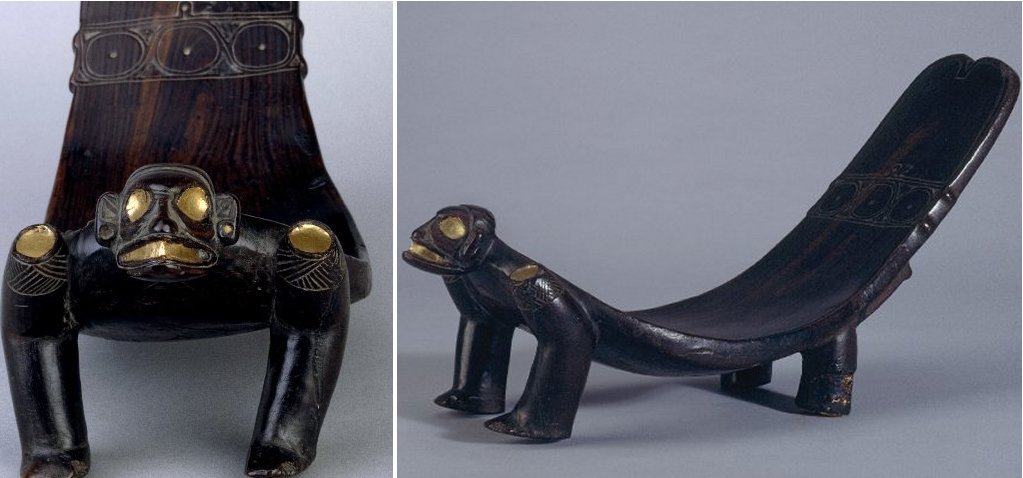Curious Ritual Wooden ‘Duho’ Stool Of Ancient Taino People
A. Sutherland - AncientPages.com - This ceremonial four-legged wooden stool known as 'duho' originates from Santo Domingo, Dominican Republic, and dates back to 1200– 1500 AD.
The grimacing, bizarre face of seat's half-human and half-animal creature. Image credit: British Museum
Scholars have long argued over the function of the Taino stool, which is not entirely known. However, the duho' was definitely not any domestic object for ordinary people.
Pre-Columbian duhos have their roots in the ancient tradition of the Taino culture, indigenous peoples of the Caribbean, what is today Haiti and the Dominican Republic), Puerto Rico, and the Bahamas.
People believed the "duho" stool possessed great power. It was carved into the shape of a weird, male creature, half-animal and half-human, with a large mouth, wide ears, and two arms, which form the front two legs of the stool. From there, a broad curve of wood sweeps upwards, supported by two more legs.
Underneath the creature and between the hind legs were carved male genitals, as described by researchers.
Many believe Taino shamans and chiefs used the artifact (only about the size of a footstool) during ceremonial communication with the spirit world.
According to José R. Oliver, a Puerto Rican/Catalan archaeologist specializing in the archaeology of the Caribbean, the duho was not a piece of furniture but rather a symbolic location of where the chief would stand, most probably a symbolic portal and a vehicle to the supernatural world.
A hallucinogenic snuff "Cohoba" prepared from the charred seeds of the cohoba tree and inhaled in a Y-shaped, twin-nasal pipe was used as a mind-altering substance. The effect of this snuff was experienced within half an hour and lasted from two to three hours, giving diverse special effects such as weird sounds, voices, and dream-like hallucinations.
By sitting on the duhos, chiefs could come in contact with the realm of the cemi (the spirit of the ancestor) and publicly display their power over the spirit world and their ability to manage and control the invisible forces governing the natural world as well as human affairs.
The Taino people believed they lived in parallel with an invisible world of ancestors and gods, from whom their leaders could seek knowledge of the future.
The Europeans who had an opportunity to see the Taino duho called it "the 'wood of life' ("lignum vitae"), which was believed to treat successfully many illnesses, from sore throats to syphilis.
Wooden four-legged stool carved in anthropomorphic form and inlaid with gold; called duho. Image credits: British Museum
The wood of the duho - smooth and perfect - originated from the Caribbean and was intentionally chosen and had remarkable qualities. It was so unusually dense that it could sink in water.
Not much is known about the Taino people. They lived in small settlements of a few thousand people, in large circular houses, each accommodating perhaps a dozen families, clustered around a central square. Their life was ruled by centers of power whose leaders fought, negotiated, and allied among themselves.
The Tainos' contact with the Europeans was fatal. Consequently, it brought enslavement, disease, and finally, the collapse of indigenous Taino society.
Many believe the artifact (only about the size of a foot stool) was used by Taino shamans and chiefs during ceremonial communication with the spirit world.
Written by – A. Sutherland AncientPages.com Staff Writer
Updated on July 22, 2022
Copyright © AncientPages.com All rights reserved. This material may not be published, broadcast, rewritten or redistributed in whole or part without the express written permission of AncientPages.com
Expand for referencesMore From Ancient Pages
-
 Danger Lurking In The Woods – Strange And Unexplained Sightings – Part 2
Featured Stories | Jul 7, 2018
Danger Lurking In The Woods – Strange And Unexplained Sightings – Part 2
Featured Stories | Jul 7, 2018 -
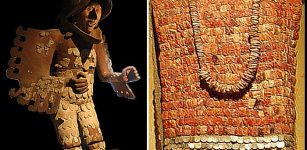 Fearsome Aztec Eagle And Jaguar Warriors Of Mesoamerica
Featured Stories | Sep 14, 2023
Fearsome Aztec Eagle And Jaguar Warriors Of Mesoamerica
Featured Stories | Sep 14, 2023 -
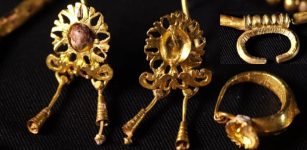 Roman-Era Girl Buried And Adorned With 1,700-Year Old Gold Jewelry Found In Pagan Cave
Archaeology | Apr 8, 2023
Roman-Era Girl Buried And Adorned With 1,700-Year Old Gold Jewelry Found In Pagan Cave
Archaeology | Apr 8, 2023 -
 On This Day In History: Unua Libro ‘First Book’ Describing Esperanto Published – On July 26, 1887
News | Jul 26, 2016
On This Day In History: Unua Libro ‘First Book’ Describing Esperanto Published – On July 26, 1887
News | Jul 26, 2016 -
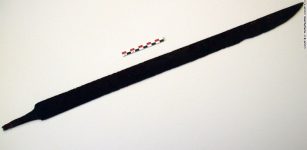 1,200-Year-Old Viking Sword Found By Hiker In Norway
Archaeology | Oct 22, 2015
1,200-Year-Old Viking Sword Found By Hiker In Norway
Archaeology | Oct 22, 2015 -
 Unraveling The Mystery Of The Phoenix Bird – Symbol Of The Sun And Eternal Rebirth Of Life
Egyptian Mythology | Nov 6, 2023
Unraveling The Mystery Of The Phoenix Bird – Symbol Of The Sun And Eternal Rebirth Of Life
Egyptian Mythology | Nov 6, 2023 -
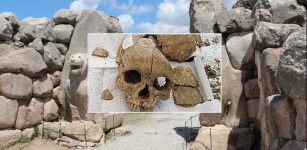 3,500-Year-Old Skull And Thighbone Discovered In Sapinuwa Antique City Of Central Anatolia
Archaeology | Dec 3, 2019
3,500-Year-Old Skull And Thighbone Discovered In Sapinuwa Antique City Of Central Anatolia
Archaeology | Dec 3, 2019 -
 King Solomon Was Invented As Political Propaganda To Unite People Of Judah – Scholars Argue
Biblical Mysteries | Feb 3, 2020
King Solomon Was Invented As Political Propaganda To Unite People Of Judah – Scholars Argue
Biblical Mysteries | Feb 3, 2020 -
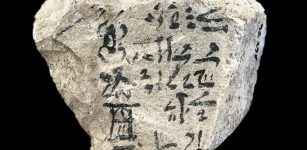 Earliest Version Of Our Alphabet Possibly Discovered
Archaeology | May 17, 2018
Earliest Version Of Our Alphabet Possibly Discovered
Archaeology | May 17, 2018 -
 Ancient Secrets Of The Aranmula Kannadi Mirror That Reflects You As You Really Look
Artifacts | Sep 10, 2021
Ancient Secrets Of The Aranmula Kannadi Mirror That Reflects You As You Really Look
Artifacts | Sep 10, 2021 -
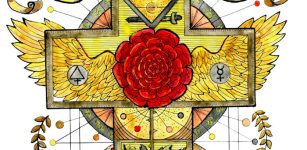 Rosicrucians: Facts And History About The Mysterious Secret Society
Featured Stories | Oct 20, 2016
Rosicrucians: Facts And History About The Mysterious Secret Society
Featured Stories | Oct 20, 2016 -
 Fascinating Ancient And Unexplained Mysteries Of Arizona – Secrets Of The Canyons And Mountains – Part 1
Featured Stories | Sep 29, 2024
Fascinating Ancient And Unexplained Mysteries Of Arizona – Secrets Of The Canyons And Mountains – Part 1
Featured Stories | Sep 29, 2024 -
 Ancient Copy Of Jesus’ Secret Teachings To His Brother James Discovered – First Apocalypse And Future Events Described
Artifacts | Dec 2, 2017
Ancient Copy Of Jesus’ Secret Teachings To His Brother James Discovered – First Apocalypse And Future Events Described
Artifacts | Dec 2, 2017 -
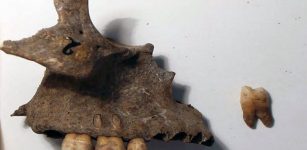 350-Year-Old Remains Unearthed In A Stone Age Site In Portugal
Archaeology | Feb 22, 2022
350-Year-Old Remains Unearthed In A Stone Age Site In Portugal
Archaeology | Feb 22, 2022 -
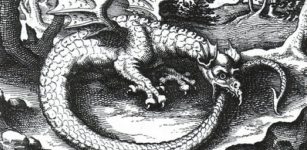 Ouroboros – Cosmic Serpent And The Self-Devourer – Universal, Powerful Symbol Of Great Antiquity
Ancient Symbols | Oct 22, 2017
Ouroboros – Cosmic Serpent And The Self-Devourer – Universal, Powerful Symbol Of Great Antiquity
Ancient Symbols | Oct 22, 2017 -
 Mystery Of Biblical Noah’s Strange Connection With Red-Skinned Giants And The Watchers – Celestial Secrets – Part 2
Biblical Mysteries | Jan 28, 2021
Mystery Of Biblical Noah’s Strange Connection With Red-Skinned Giants And The Watchers – Celestial Secrets – Part 2
Biblical Mysteries | Jan 28, 2021 -
 Unpredictable Rainfall May Have Caused Disintegration Of Early Maya Societies
Archaeology | Apr 7, 2023
Unpredictable Rainfall May Have Caused Disintegration Of Early Maya Societies
Archaeology | Apr 7, 2023 -
 Medieval City Dating Back To The Great Northern War Discovered In Tartu, Estonia
Archaeology | Jan 8, 2021
Medieval City Dating Back To The Great Northern War Discovered In Tartu, Estonia
Archaeology | Jan 8, 2021 -
 Men Are Slowly Losing Their Y Chromosome – Is The Future Of Humanity In Danger?
Featured Stories | Nov 7, 2023
Men Are Slowly Losing Their Y Chromosome – Is The Future Of Humanity In Danger?
Featured Stories | Nov 7, 2023 -
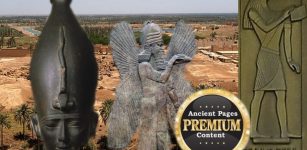 Surprising Ancient Secrets Of The ‘Second Thoth’ And God Osiris
Egyptian Mythology | Sep 27, 2018
Surprising Ancient Secrets Of The ‘Second Thoth’ And God Osiris
Egyptian Mythology | Sep 27, 2018



